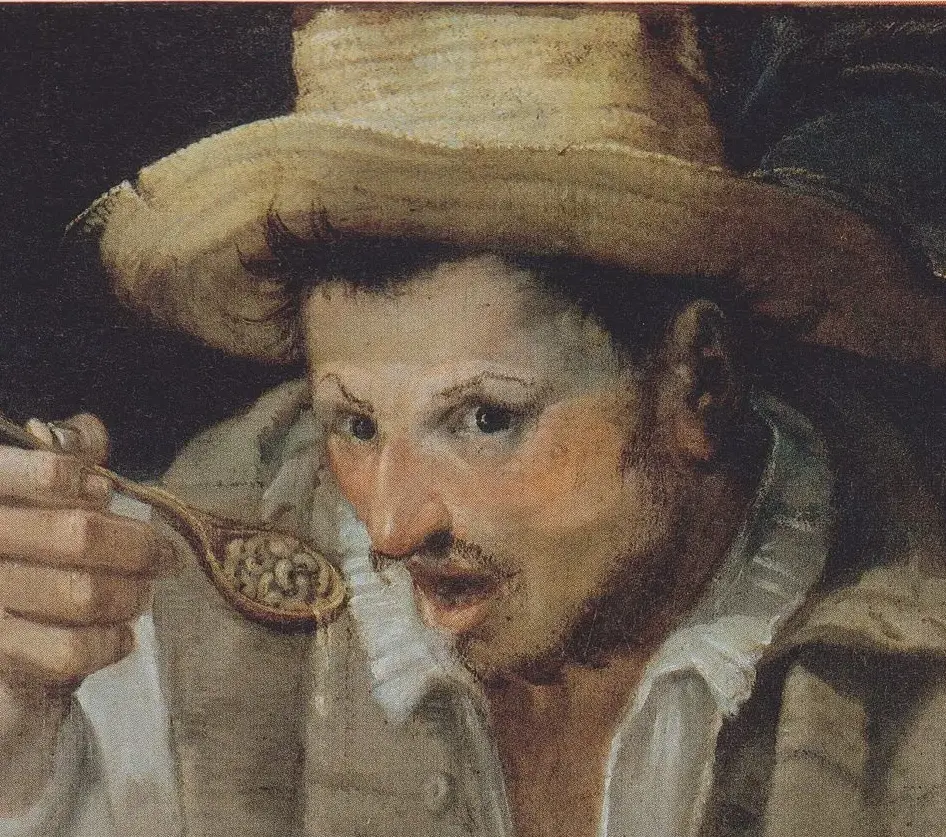Painting, the emperor 'Alamgir with a halo, standing facing left, holding a long straight-bladed sword. Opaque watercolour and gold on paper, Mughal, ca. 1700
The Mughal prince Aurangzeb took the title Alamgir (World Seizer) when he came to power in 1658, having usurped his seriously ill father Shah Jahan. The emperor is depicted in this painting which dates from ca. 1660 as a relatively young man, richly dressed and bejewelled, and with the halo that characterised imperial figures from the reign of his grandfather, Jahangir. Later in life, his religious asceticism made him reject such opulence. The anonymous artist has shown him standing, full length, in profile against a plain pale green background, continuing a tradition in Mughal portraiture that had begun in the late 16th century. Alamgir inherited an immensely wealthy empire, but spent the second half of his extremely long reign (he died in 1707) conducting wars against the Muslim sultanates of the Deccan, in the south of the subcontinent, which though ultimately successful were won at enormous cost and weakened the empire irrevocably.
Fun Fact: I am a Mughal myself. So an heir of Aurangzeb.
conducting wars… which though ultimately successful were won at enormous cost and weakened the empire irrevocably.
Good spot right here to drop the term Pyrrhic Victory.
The beginning of Aurangzeb’s reign, when he took the title ‘Alamgir or “Seizer of the World”, was characterised by great splendour. At his coronation, he sat on the spectacular Jewelled Throne that had been made for Shah Jahan. This had taken seven years to create and would later become legendary, and known as the Peacock Throne. The French goldsmith and jewel merchant Jean-Baptiste Tavernier who visited the court in the 1660s commented on ‘Alamgir’s love of precious stones and the opulence of his ornaments.
Wearing that round thing on one’s shoulder seems like it would get annoying quickly.
That’s a halo in the background. An artistic tradition borrowed from Western Christian art.
(Unless that was a joke and I didn’t catch the tone lol)


